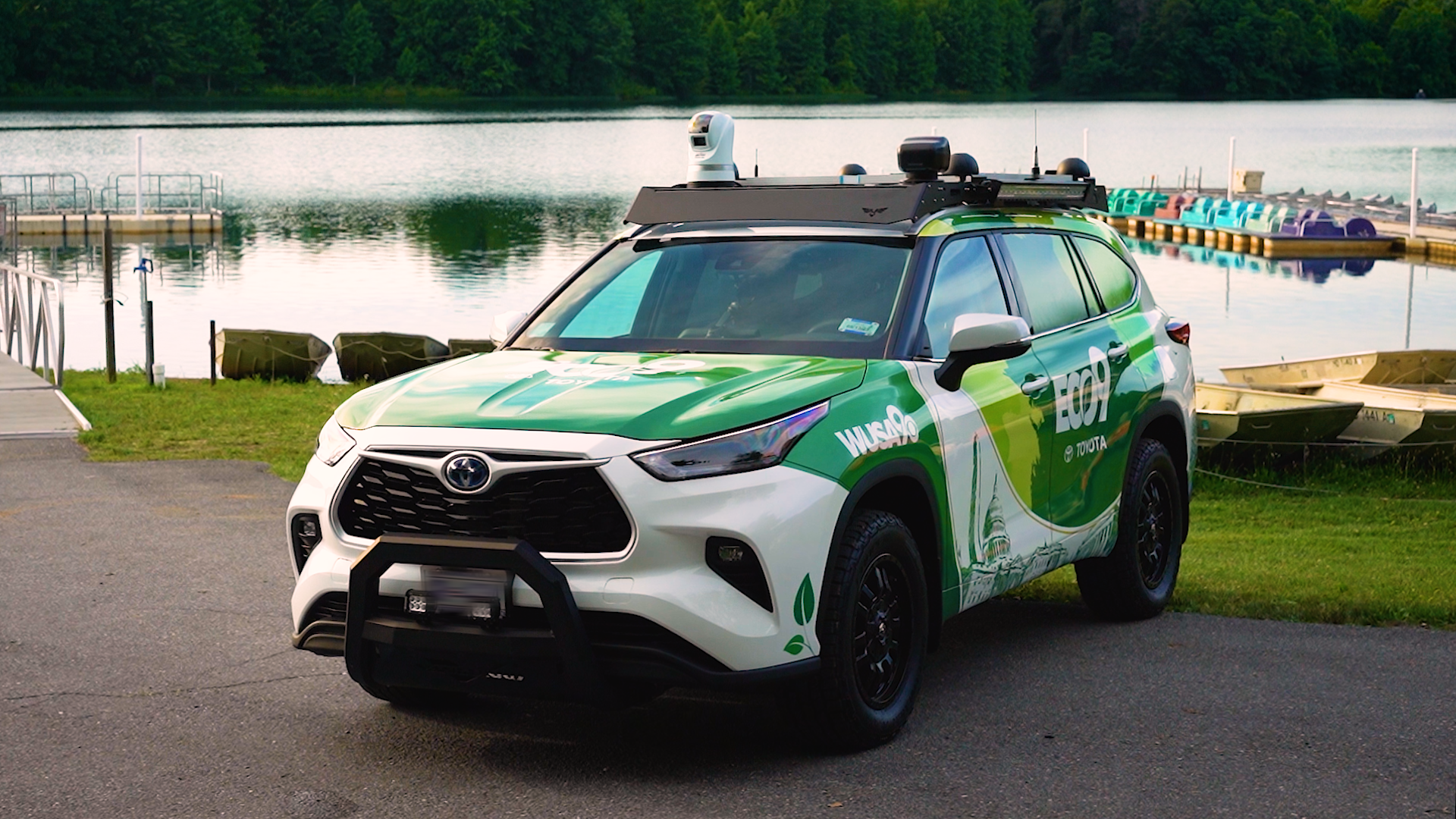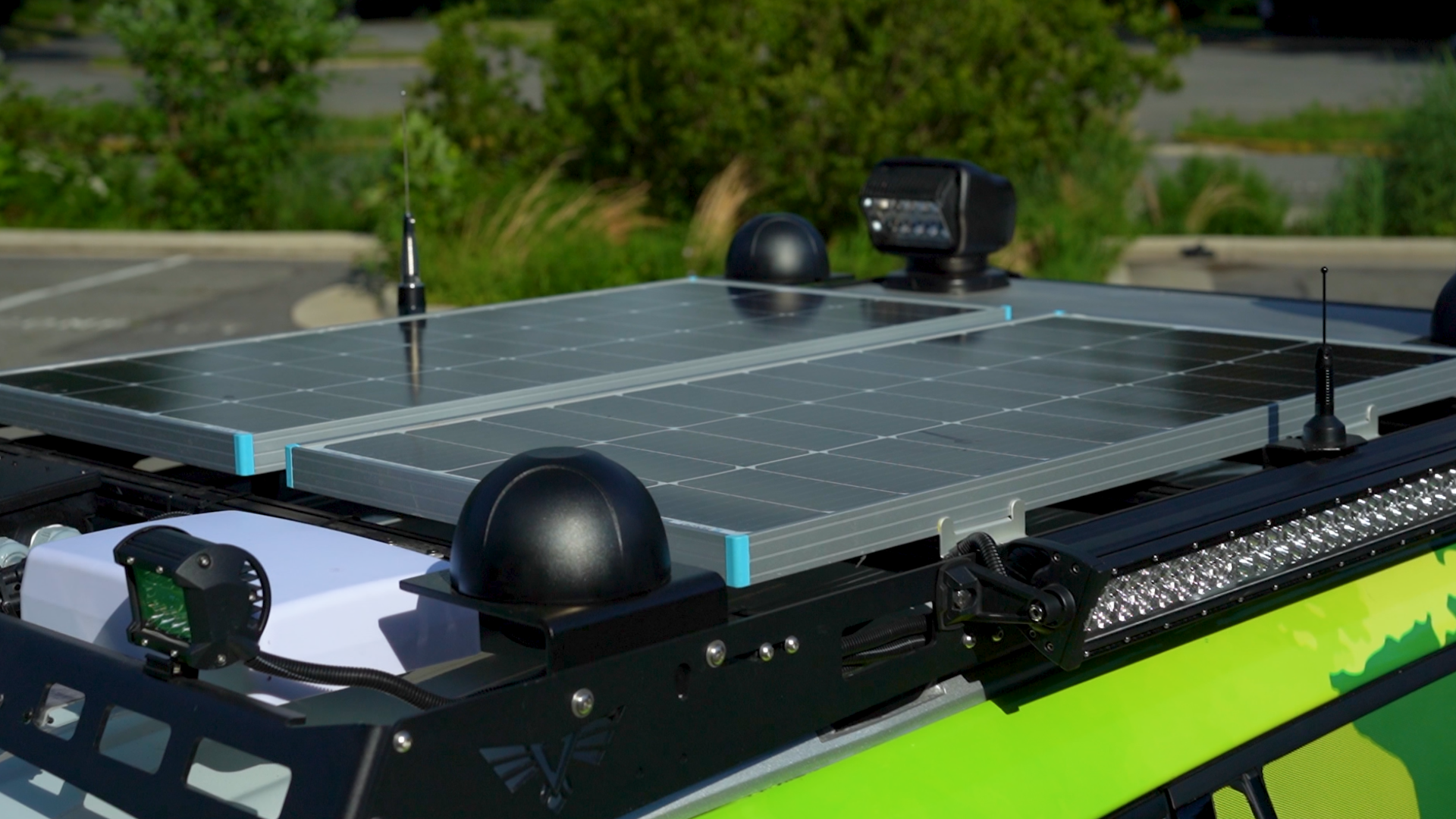WUSA9 Debuts Groundbreaking Eco-Friendly Live Truck
WUSA9 is billing the ECO9 truck as the first environmentally-friendly live truck in the U.S. broadcasting industry

WASHINGTON, D.C.—Tegna’s WUSA9 CBS affiliate serving the Washington D.C., Virginia and Maryland region, has debuted ECO9, a new low-emission live truck that the station is billing as a first for the U.S. broadcasting industry.
ECO9 was conceived by WUSA and built by engineers at Frontline Communications as part of a larger effort by WUSA9 and Tegna to deploy more eco-friendly technologies.
“Our environment matters, and we’ve committed to making a positive impact through our work, which includes today’s introduction of ECO9,” explained Richard Dyer, president and general manager, WUSA. “ECO9 might be the first of its kind, but we hope it will be a standard setter as we begin testing its capabilities here in the DMV.”
Working to reduce greenhouse emissions that create climate change, “is a big, big undertaking for each of us individually but also from the business community,” added Dyer. “We use live trucks in our business and those vehicles have an impact on our environment.…So we started asking ourselves how we can use the tradition of innovation we have here at Tegna to innovate in a way that would have a positive impact on the environment.”
One example of that innovation was the design and development of Washington D.C. first storm-chaser truck about six years ago, a project that provided valuable experience for the new ECO9.
Rob Gibson, WUSA9’s director of technology and operations said that they began thinking about how to design a new eco-friendly live truck last year.
Traditionally live trucks have had to leave the engine running to power the broadcast equipment with special alternators or work from generators, which makes live trucks an obvious starting point for deploying environmentally sustainable technologies.
Get the TV Tech Newsletter
The professional video industry's #1 source for news, trends and product and tech information. Sign up below.
To reduce that carbon footprint, Gibson initially started talking to the engineers at Frontline Communications about an all-electric truck. “We fairly quickly figured out that an all-electric platform just wasn't going to work,” Gibson said, adding that crews on deadline for a story might have to find a charging station and wait an hour for everything to get charged up before they could get back to work. “We really didn't want them to run out of power in situations like that, so we pivoted to a hybrid platform.”
“I asked Frontline [Communications] if they could build a hybrid platform and they said `yeah’ we’ve been using the technology in other applications for government agencies, fire trucks, etc.," Gibson added. "They just hadn't done it for a broadcast truck."
The resulting ECO9 is built around a 2022 Toyota Highlander XLE Hybrid.
In terms of the broadcast technology, the design builds on WUSA9’s experience with launching their live weather truck, Gibson said. “We took the lessons that we learned on that vehicle which is now six years old. We dropped what we didn't like and improved upon it so the reporter sitting in the backseat has more room.”
The new ECO9 truck is equipped with three cameras. There are two fixed internal cameras from Marshall and a 360-degree external camera from Rugged CCTV.
To deliver video back to the station, the truck uses Dejero EnGo and a 5G wireless router from Inseego, which gives them very low latency.
“What is groundbreaking. Is to have the opportunity to make another vehicle kind of in the mold of the one that we built six years ago, but improve on it from both a user standpoint and to make things much more eco-friendly,” Gibson said. “In this case, what really makes the truck different is its battery. It's the power solution. That's where we took a step forward. Maybe 10 or 12 years ago, specialized alternators started replacing the generators [to power the equipment] and I don't really think there's been much of a change since.”
The hybrid Eco9 truck runs on a state-of-the-art rechargeable lithium-ion battery system (Li-ION batteries) with supplemental charging from solar panels on the roof.
That allows ECO9’s broadcasting technologies to operate continually with the truck’s engine turned off for six hours.

More specifically, the truck uses an lithium-ion battery called a LiFePO4 battery, which consists of a chemical compound that makes it one of the safest batteries on the market. Commonly used in mobile phones, RVs, boats and golf carts, this battery is also the ideal choice for ECO9 as it is expected to handle more than 5,000 cycles and can discharge close to zero and recharge. The batteries were supplied by Battleborn Batteries.
With solar supplemental charging, ECO9 allows for trickle charging during the day while it is out in natural light.
The power management system is from Victron Energy. It regulates the shore power charging, integrates the trickle charge from the solar panels and vehicle alternator, and converts the DC to AC to supply the power to the rack.
“When we first gave Frontline [Communications] the list of equipment for the truck, we're able to calculate that at full load, just on battery, you'd be able to do six hours without the engine on,” Gibson said. “The average live shot in local news is maybe at the most, two and a half hours, so you have the power to fire up the truck, edit the story and send it back without having to have the truck running. The engine does not have to sit there idling for hours.”
ECO9 was also made possible by Washington Area Toyota Dealers who are serving as launch partner and exclusive sponsor.
A video of the launch can be viewed here.
George Winslow is the senior content producer for TV Tech. He has written about the television, media and technology industries for nearly 30 years for such publications as Broadcasting & Cable, Multichannel News and TV Tech. Over the years, he has edited a number of magazines, including Multichannel News International and World Screen, and moderated panels at such major industry events as NAB and MIP TV. He has published two books and dozens of encyclopedia articles on such subjects as the media, New York City history and economics.

